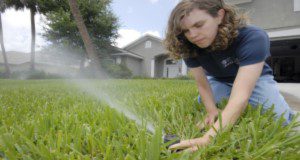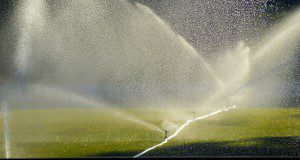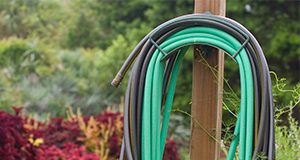Extension communication efforts can be made more effective when following a strategic communication plan. To guide a strategic communication effort, it is imperative to have purposeful messaging along with an understanding of your target audience and communication channel. This new 3-page document, published by the UF/IFAS Department of Agricultural Education and Communication, presents a synthesis of literature highlighting best communication practices in regard to water conservation efforts. Written by Jacqueline Aenlle and Laura A. Sanagorski Warner.
https://edis.ifas.ufl.edu/wc366
Tag: Laura A. Sanagorski Warner
Using Journey Mapping within Extension: A Tool for Supporting Behavior-Change Programs
 Extension is an important change agency, and Extension professionals use innovative strategies to help target audiences to adopt research-based practices and technologies. Tools from commercial marketing can be applied to behavior-change campaigns, often through an underused approach known as social marketing. Journey maps can be developed with Extension clients to provide insight into their progression and decision-making from one place or state of being to another. A journey can be the steps a person takes when selecting plants for the landscape, the decision-making process used when identifying agricultural business strategies, or the steps a person takes when leaving a workshop and travelling to their home. This new 9-page publication of the UF/IFAS Department of Agricultural Education and Communication, written by Colby Silvert and Laura A. Sanagorski Warner, presents possible applications of journey mapping within an Extension context.
Extension is an important change agency, and Extension professionals use innovative strategies to help target audiences to adopt research-based practices and technologies. Tools from commercial marketing can be applied to behavior-change campaigns, often through an underused approach known as social marketing. Journey maps can be developed with Extension clients to provide insight into their progression and decision-making from one place or state of being to another. A journey can be the steps a person takes when selecting plants for the landscape, the decision-making process used when identifying agricultural business strategies, or the steps a person takes when leaving a workshop and travelling to their home. This new 9-page publication of the UF/IFAS Department of Agricultural Education and Communication, written by Colby Silvert and Laura A. Sanagorski Warner, presents possible applications of journey mapping within an Extension context.
http://edis.ifas.ufl.edu/wc333
Exploring Relationships among Social Norms, Aesthetics, HOA Regulations and Water Conservation
In the United States, landscape irrigation often consumes 50% or more of residential water used, and aesthetics may take preference over water-conserving elements in the landscape. Other factors such as perceived social norms and homeowners' association (HOA) regulations also impact water conservation behaviors. Binary logistic regression estimated the impact of aesthetics, perceived social norms, and HOA regulations on water conservation intentions. Findings revealed that when individuals placed a higher-than-average value on aesthetics and perceived stronger social support for conservation, home irrigation users had greater intent to conserve water. This new 4-page publication of the UF/IFAS Department of Agricultural Education and Communication was written by Amanda D. Ali and Laura A. Sanagorski Warner.
http://edis.ifas.ufl.edu/wc331
Meeting US Nursery and Greenhouse Growers’ Needs with Water Conservation Extension Programs
This 5-page document presents results of a study designed to understand the knowledge level, adoption rate, and levels of continuance associated with eight water conservation technologies among nursery and greenhouse growers. Written by Laura A. Sanagorski Warner, Alexa J. Lamm, Sarah A. White, Paul R. Fisher, and Peyton N. Beattie and published by the UF/IFAS Department of Agricultural Education and Communication, January 2019.
http://edis.ifas.ufl.edu/wc327
Communicating to the Ages: Influence of Age on Florida Residents’ Informational Processing Behaviors
This 5-page document explores the results of a study in which Florida residents processed video messages about fertilizer best practices, with a focus on how their information-processing behaviors differed by age. Written by Amanda D. Ali, Laura A. Sanagorski Warner, Ashley N. McCleod, Shelli Rampold, and Alexa J. Lamm and published by the UF/IFAS Department of Agricultural Education and Communication, December 2018.
http://edis.ifas.ufl.edu/wc323



